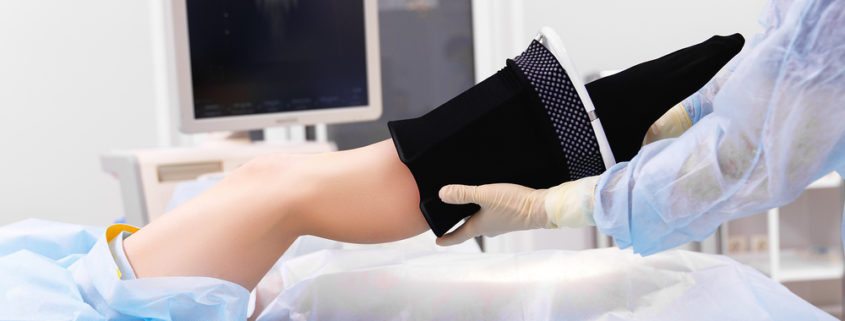Surgery vs. Laser Treatment for Varicose Veins
In recent past, if a patient suffered from painful and unsightly varicose veins, a doctor would typically recommend vein ligation and stripping—a surgical procedure that removes the veins from the legs or thighs.
Ligation refers to the surgical tying off of the greater saphenous vein in the leg, while stripping refers to the removal of this vein through incisions in the groin area or behind the knee. Tying and removal of the vein are done to reduce the pressure of blood flowing backward through this large vein into the smaller veins that feed into it.
Varicose vein stripping is often done under general anesthesia, and although it is a safe and low-risk procedure, there are always possible side effects, including allergic reaction to the anesthesia, infection at the incision sites, heavy bleeding, blood clots, bruising or scarring, and nerve injury.
Stripping and ligation surgery typically takes 60-90 minutes, although more complicated cases may go longer. However, it is usually an outpatient surgery, so patients can go home the same day. Recovery typically takes two to four weeks, but actual recovery time will vary depending on the number and location of the veins that were removed.
For more than a decade, though, surgical vein ligation and stripping have been performed less frequently because of newer, less-invasive, forms of treatment.
One of these treatments is known as Endovenous Laser Therapy (EVLT). EVLT uses ultrasound to guide an optical fiber into the vein. A highly concentrated laser beam heats the walls of the veins and reduces them, causing unhealthy veins to contract and close up.
The patient is conscious (but given the option of oral or intravenous conscious sedation for relaxation), and the leg is numbed using local anesthesia. Laser accuracy allows the doctor to treat the vein without affecting surrounding tissue, and when the vein is closed, it is slowly absorbed into the surrounding soft tissue. Other healthy veins in the legs then take over and blood flow returns to normal.
EVLT is remarkably safe, but as always with any medical procedure, there are risks involved, including skin burns, nerve injury, and blood clots. The procedure also boasts a remarkable 98 percent success rate.
The procedure is typically done within an hour, and patients go home the same day. In studies, patients have reported a faster recovery time than with vein stripping, and EVLT can also be less expensive than stripping and ligation, depending on the number of veins treated.
Although both forms of treatment can be highly successful and have minimal side effects, EVLT is generally a faster and less painful approach, can be less expensive, does not involve general anesthesia, and can have a faster recovery time than vein stripping and ligation surgery. Talking with your doctor can help you decide which procedure is right for you.



